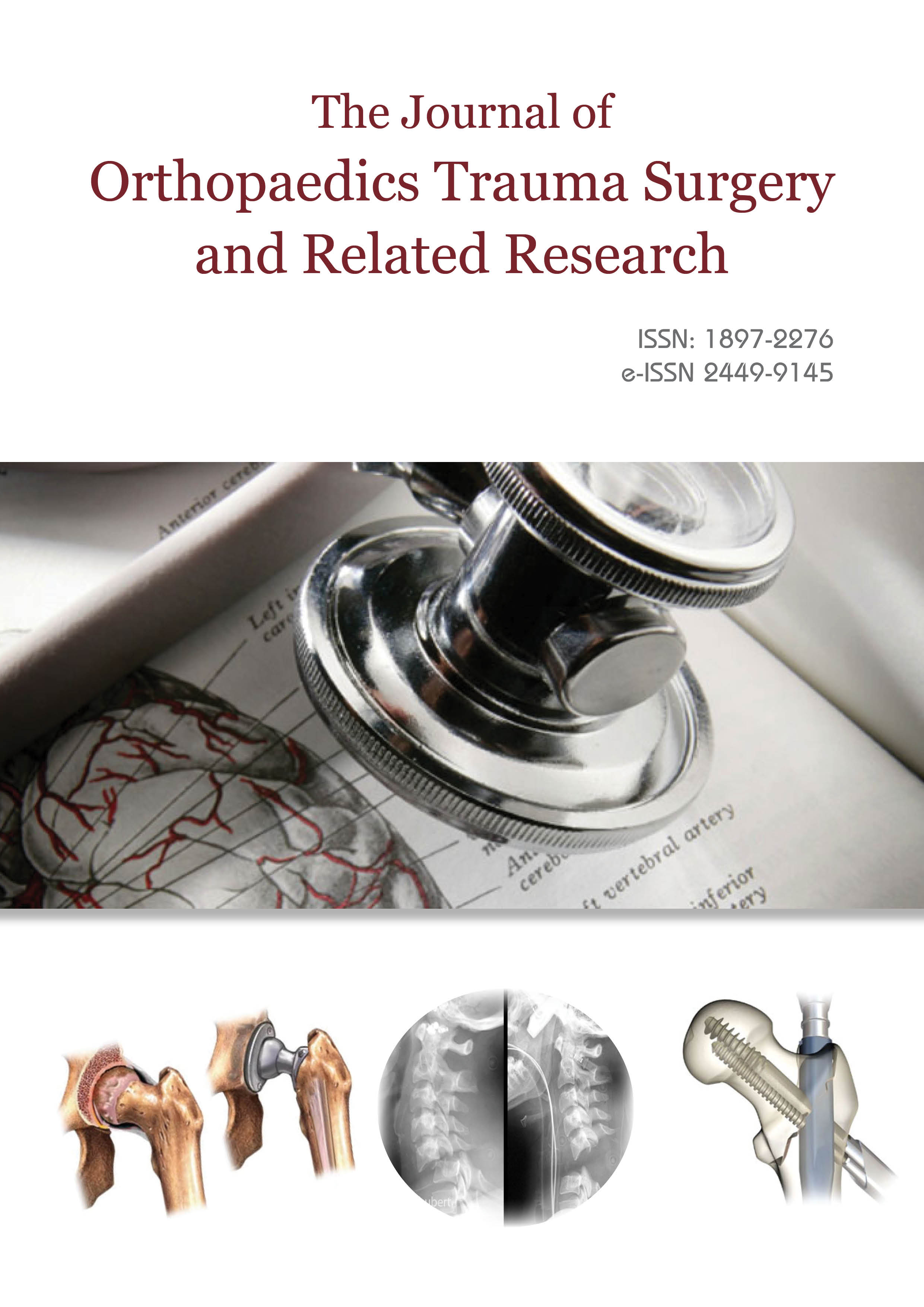Journal of Orthopaedics Trauma Surgery and Related Research

An Official Journal of Polish Society of Orthopaedics and Traumatology
ISSN:1897-2276
e-ISSN: 2449-9145

An Official Journal of Polish Society of Orthopaedics and Traumatology
ISSN:1897-2276
e-ISSN: 2449-9145
Introduction. Disorders in microvasculature are a frequent disorder occurring in different types of trauma. They predispose to constitutional inflammation reaction (SIRS) leading to serious sepsis and multi-organ deficit syndrome (MODS). In the span of the last few years we were looking for parameters allowing for the monitoring of the severity of disorders related to the functioning of microvasculature. One parameter recommended in monitoring the shock on tissue level was determining lactates concentration in blood serum. Aim of the work. The aim of the work is to evaluate the suitability of monitoring the level of lactates in patients treated in intensive care unit on the course of burn disease in a period above 7 days. Material and method. Some parameters of gasometrical tests (pH, lactates) of 38 patients of both sexes randomly chosen were retrospectively analyzed. 10 women and 28 men were treated in intensive care unit in the Centre of Burn Treatment between 05.2009-10.2009. The average age was 42,l years (21-85 years), and the average burn surface was 55,3% (9 - 90%). In 36 patients, we confirmed the burn of air passages. 2 patients were admitted to intensive care unit after sudden cardiac arrest with successful resuscitation. We analyzed the results of gasometrical tests in 24 hour intervals. On the basis of gasometrical tests, we compared the levels of lactates and pH serum. In the analyzed group, 19 patients survived a period of 7 days; 9 patients died in the period above 7 days from admission. The remaining patients (10 people) stayed in intensive care unit after the treatment, but were transferred to the ward of burn treatment. The most frequent cause of death was the syndrome of multi-organ deficit in the course of burn disease. Conclusion. 1. The level of lactates may be, in some cases, a predicative parameter defining the dynamics of ischaemic variations and organism anoxia. 2. In case of sudden increase of lactates level (twofold or more within 24 hours), it shows irreversible changes in microvasculature, and the survival prognosis of the patient is doubtful. 3. The level of lactates on patient’s admission to intensive care is of no greater significance in predicting the survival rate above 7 days.
Select your language of interest to view the total content in your interested language
 Journal of Orthopaedics Trauma Surgery and Related Research a publication of Polish Society, is a peer-reviewed online journal with quaterly print on demand compilation of issues published.
Journal of Orthopaedics Trauma Surgery and Related Research a publication of Polish Society, is a peer-reviewed online journal with quaterly print on demand compilation of issues published.